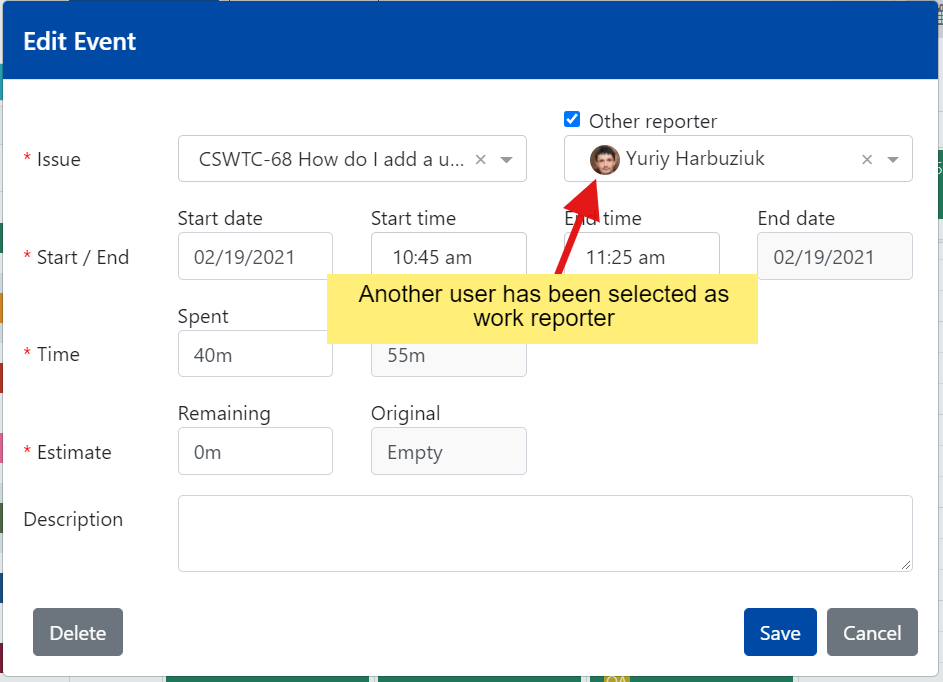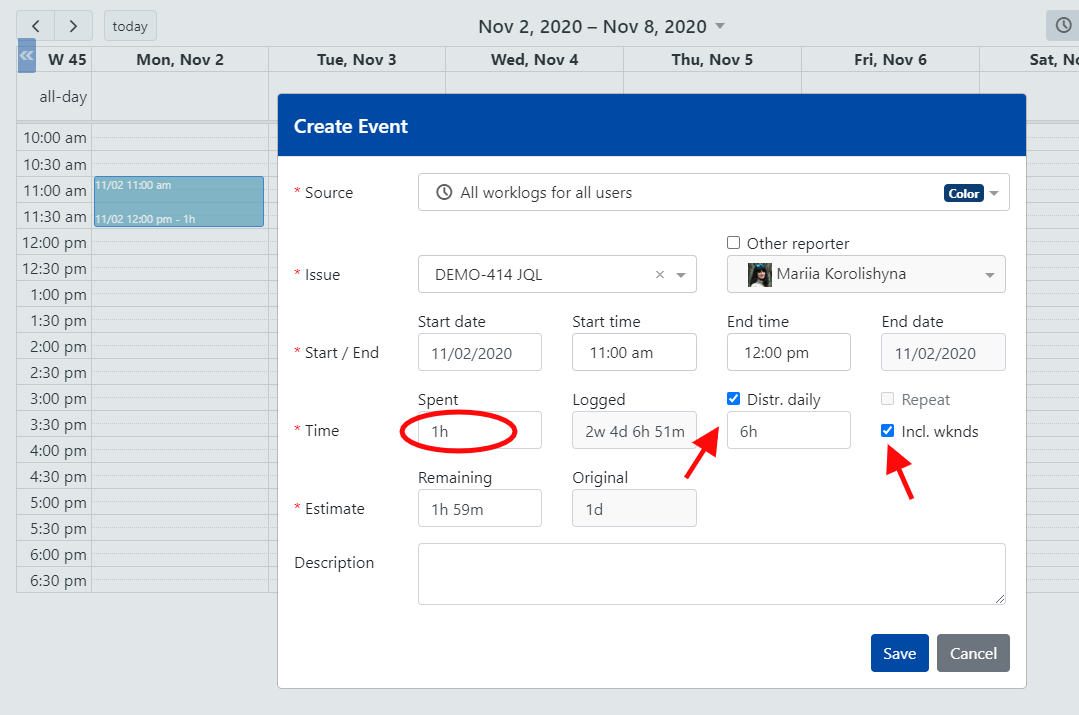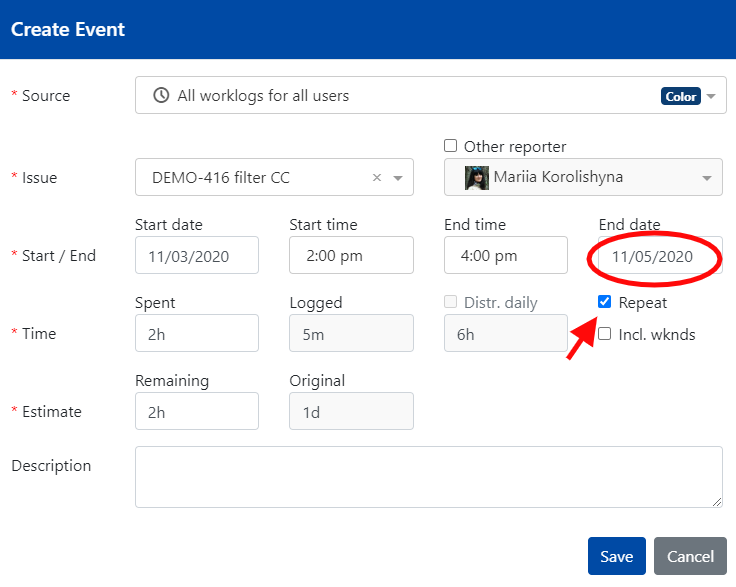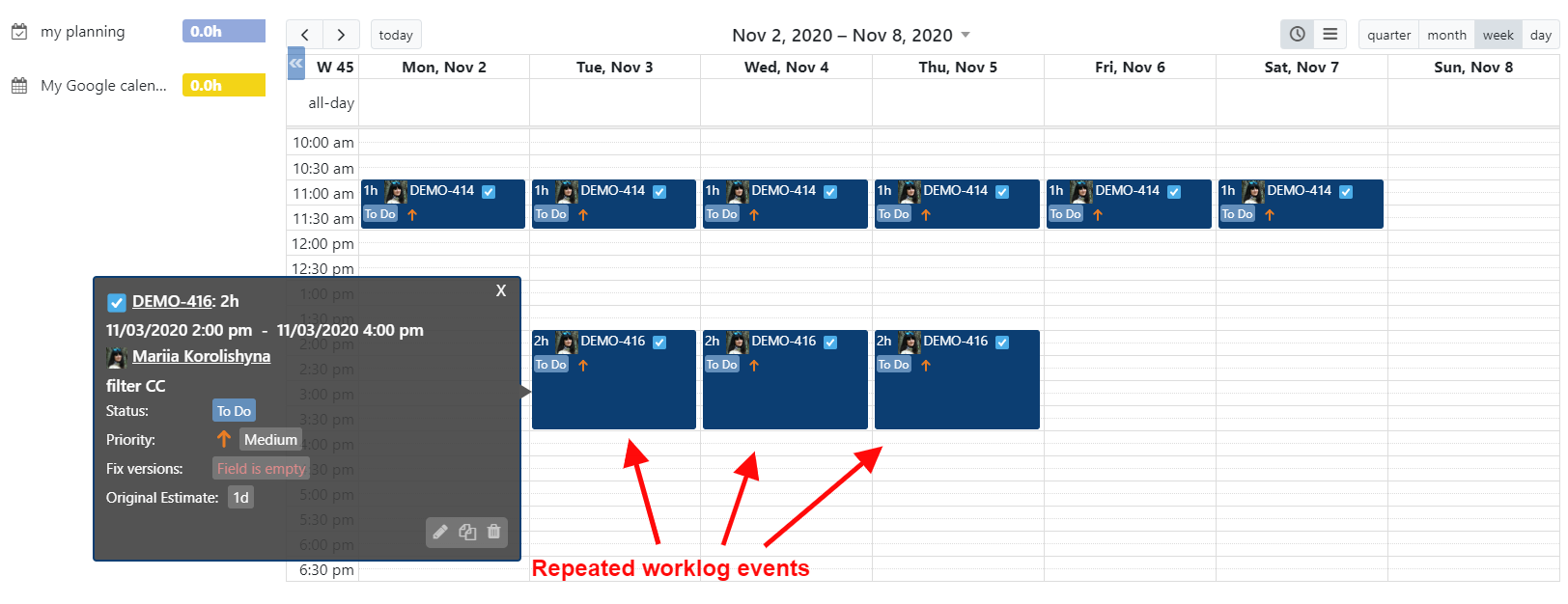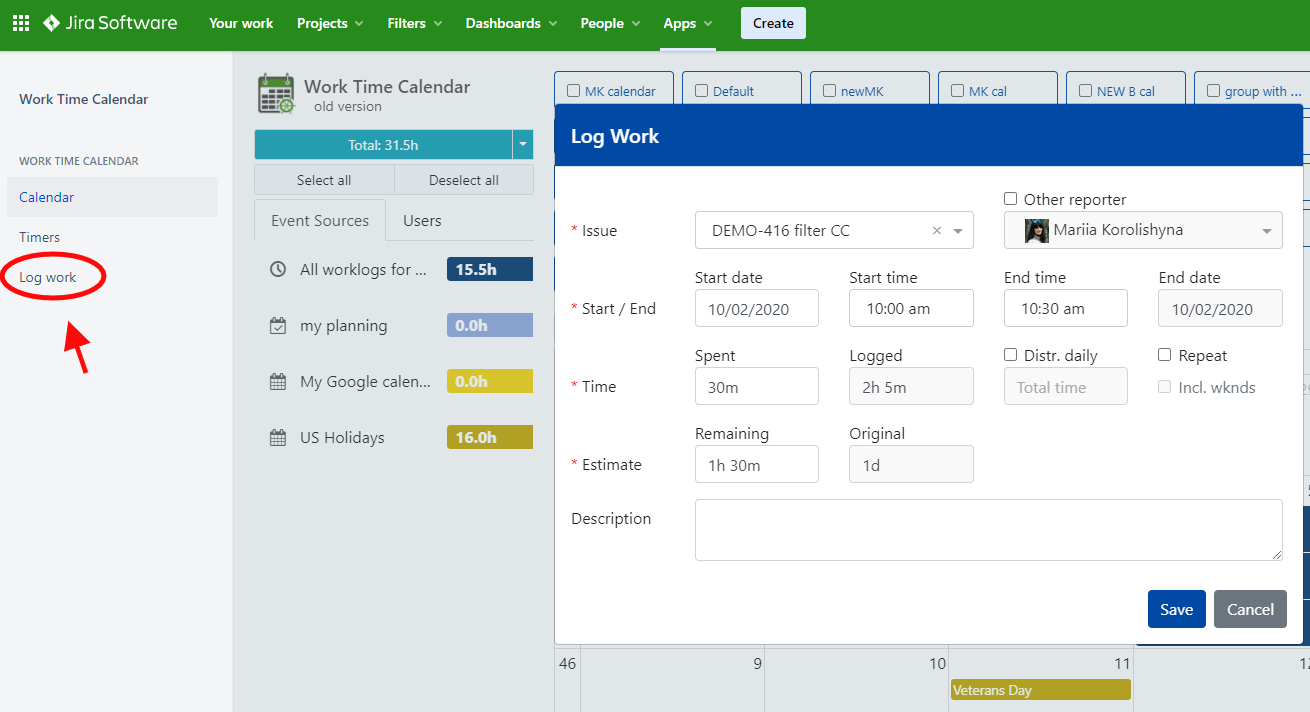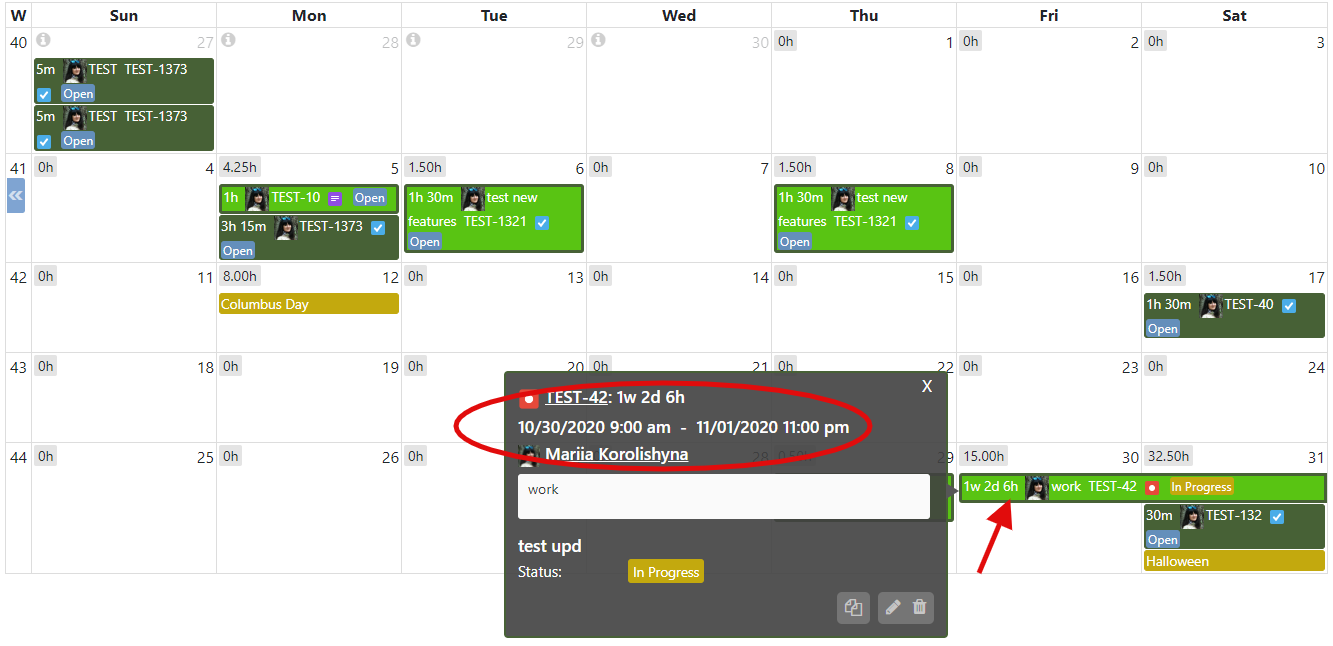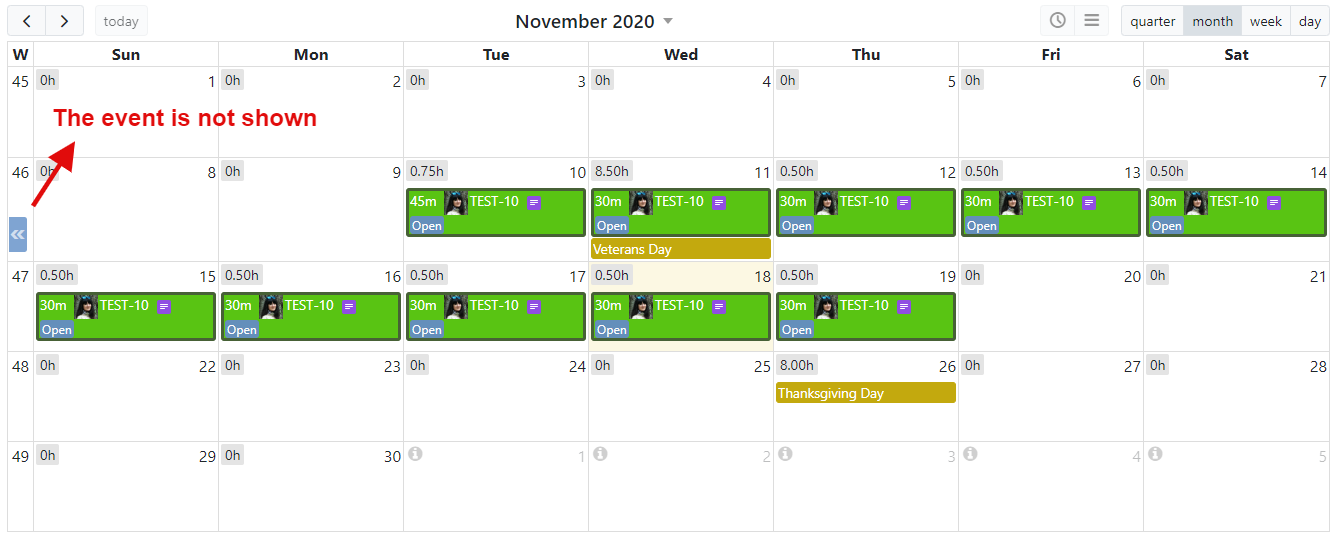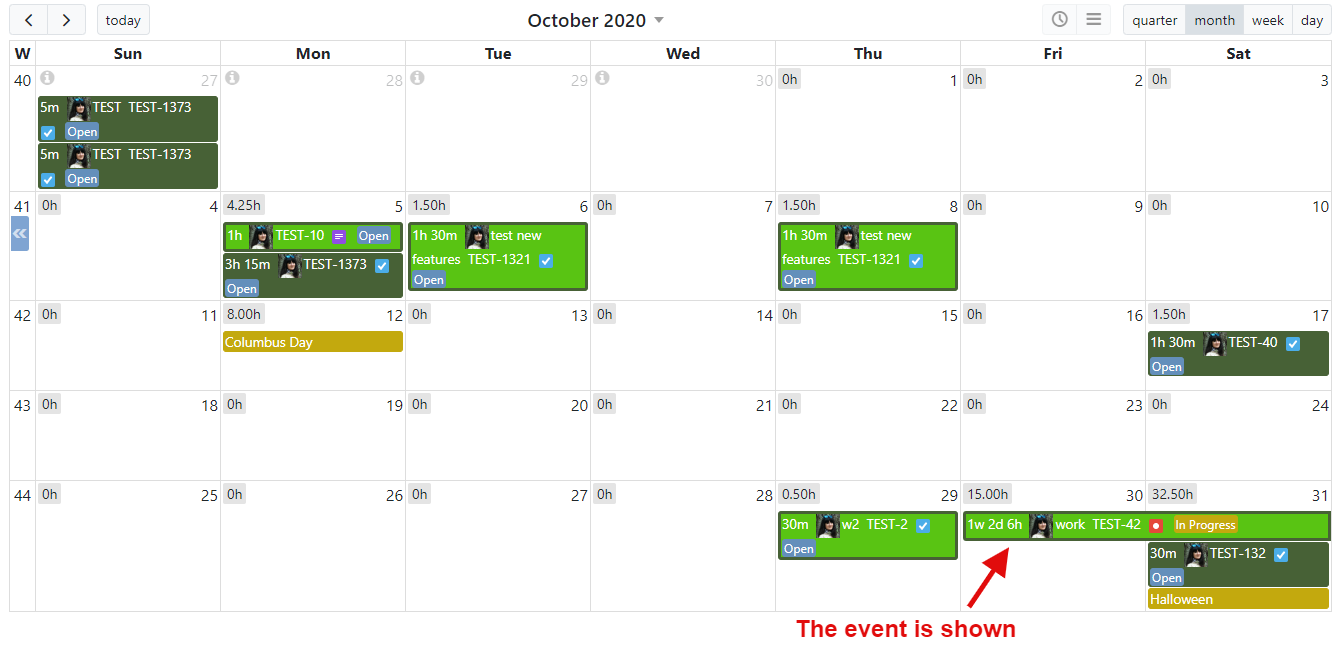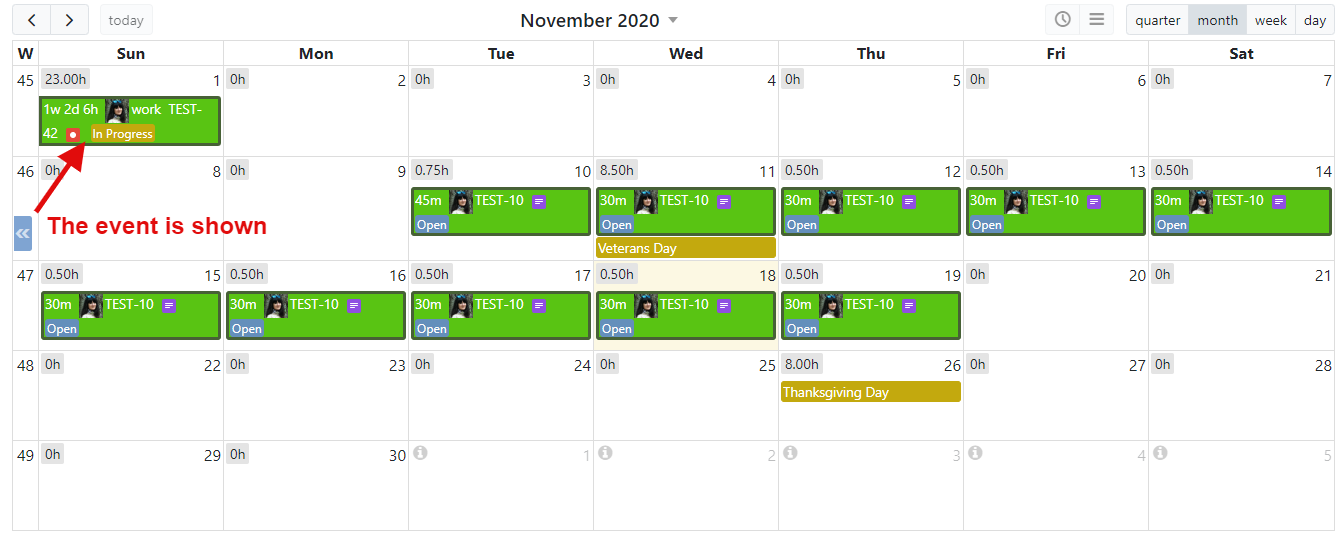To create a worklog event, first, make sure that the required worklog source is enabled, on the left panel.
The disabled source will be greyed out:
Then, click (or click-and-drag), on a calendar.
Note that, while you are dragging over the calendar, the end time changes, and the start time is fixed based on your click. In addition, the duration of the event is shown next to the end time.
Once you release the button on your mouse, the Create Event dialog is open.
In case you haven’t created any worklog event yet and there are more than one source enabled on the left panel, you would have to select a required source.
Source that you used the last time for event creation will be populated into the Source field, next time you are about to create an event.
The recent matching issues will be shown as suggestions, below the issue picker field.
Check the Time Spent. Note that Time Logged, Remaining Estimate and Original Estimate are populated based on issue selection.
Once the worklog event is created, it is shown on a calendar, assuming that it complies with the source configuration, and the proper date is displayed on a calendar.
To see the information dialog that refers to the event, you would have to click on event:
Note that information dialog for the event contains action icons: Edit, Copy and Delete.
In case an event description contains a link it will be clickable should it be configured to be displayed on event’s information dialog.
Please note that you are able to create a worklog for another person, by selecting a different Reporter, on Create Event or Edit Event dialog:
Distribute daily and Repeat options require further explanation as both features can be widely used, once understood.
Distribute daily (Distr. daily) option lets user to distribute the total time she has spent on a task over few days.
Please note that you can either include or exclude the weekends.
Let's say, you've spent total 6h on the task "DEMO-414 JQL" over six days, including a weekend, 1h per day.
You might want to use the Repeat option in case your work repeats itself for two or more days.
For instance, you worked on the task for three days, 2h per day.
Note that the End date becomes editable, once you select the option Repeat.
Worklog creation, using Jira menu
You can also create a worklog event by clicking Log work, on Jira menu:
When retrieving worklogs for the currently displayed calendar period, we fetch work records started one day before the current period start date.
In case when a worklog started more than 24 hours prior visible period start date and lasts for more than 48 hours so it overlaps to the current period, it is not shown on a calendar unless user navigates to the period that includes this worklog.
For instance, you've created a 62-hour long worklog that starts on October 30th, 2020 and ends on November 1st, 2020.
When you open your calendar in monthly view for November 2020, you will not see the event.
If you navigate to previous calendar period, October 2020, you will see the event.
Once clicked the right arrow to be navigated to the next calendar period, November 2020, you will see the event.
Starting app version 5.5.x, you’ll see a time tracking bar on Create Event, Edit Event and Log Work dialogs.
In case there is more time spent than the original time estimate the extra time will be highlighted in yellow and shown in a title, once a user hovers over the bar. Please see below:
The time tracking bar is also shown in case a user logs work on issue detail page, using the Work Time Calendar timer.
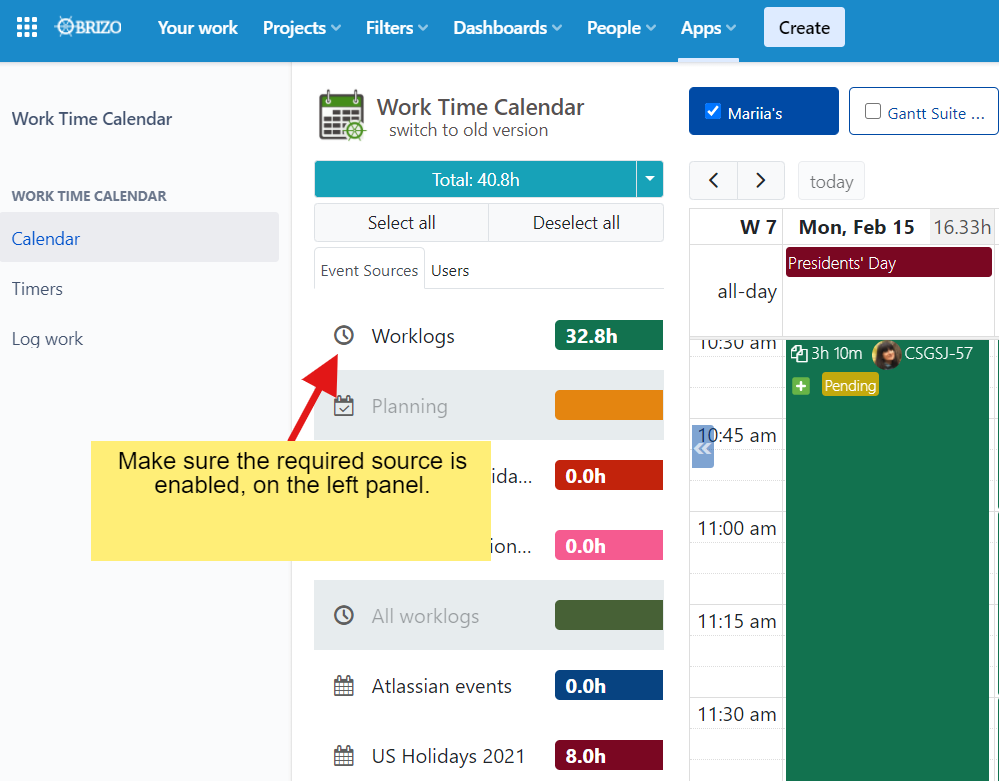
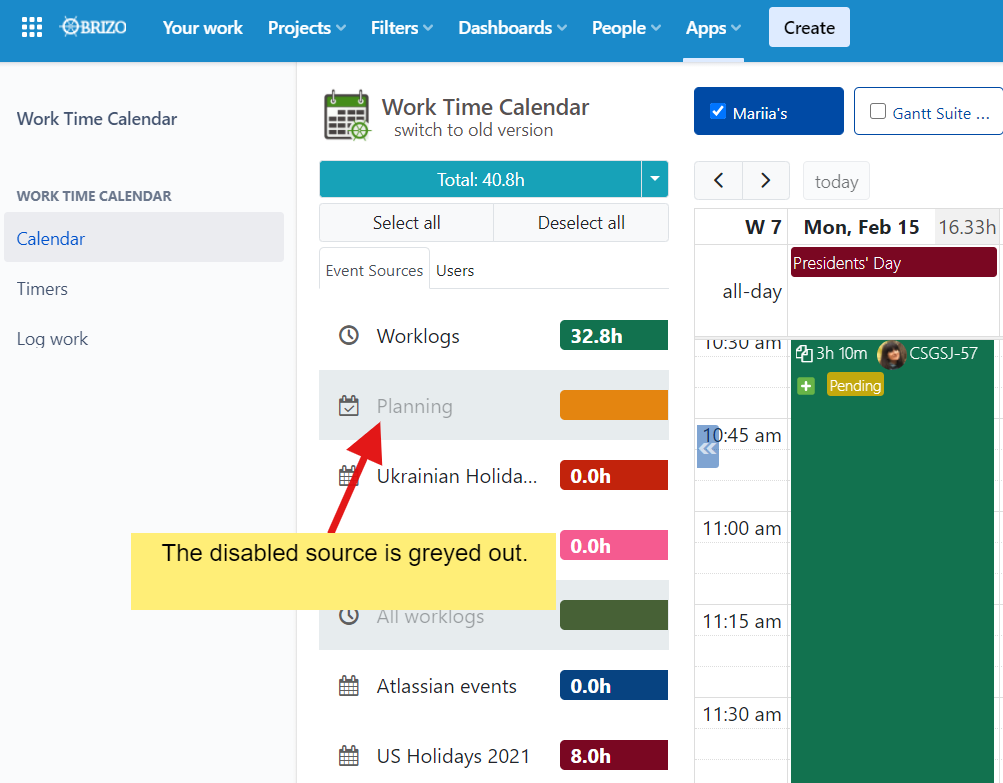


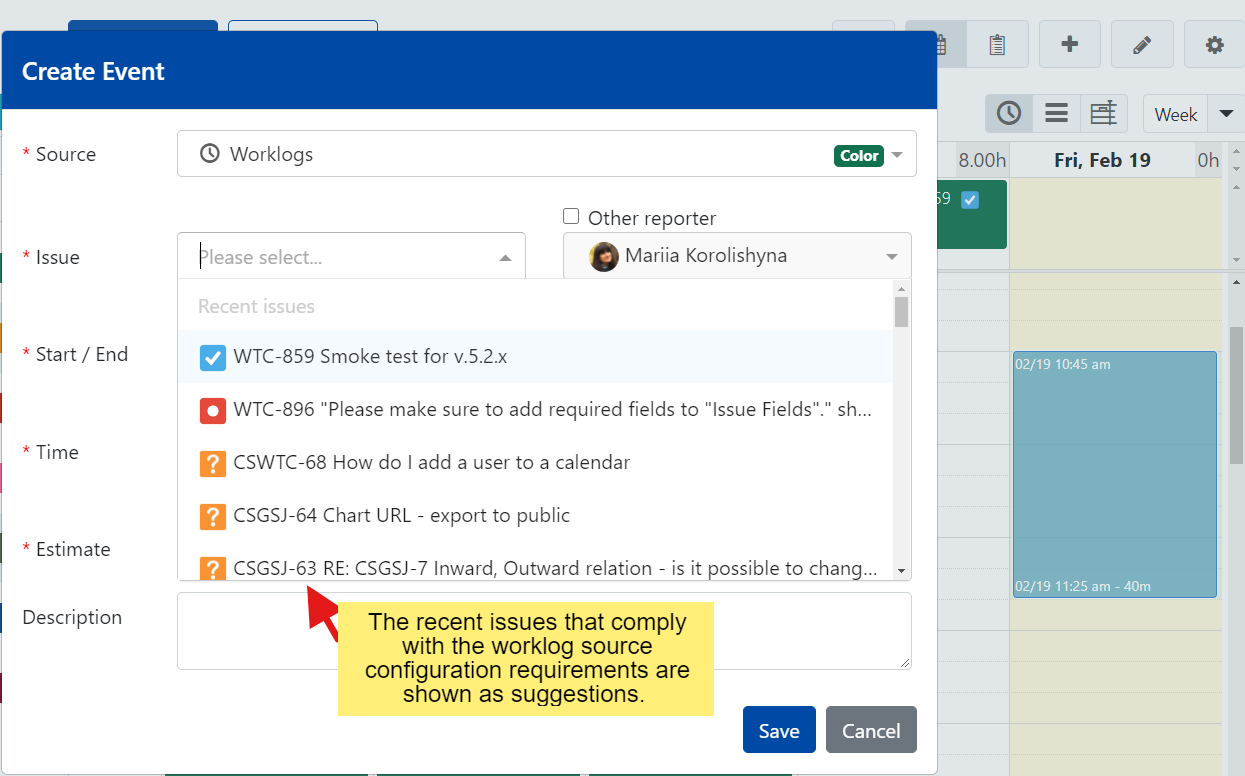


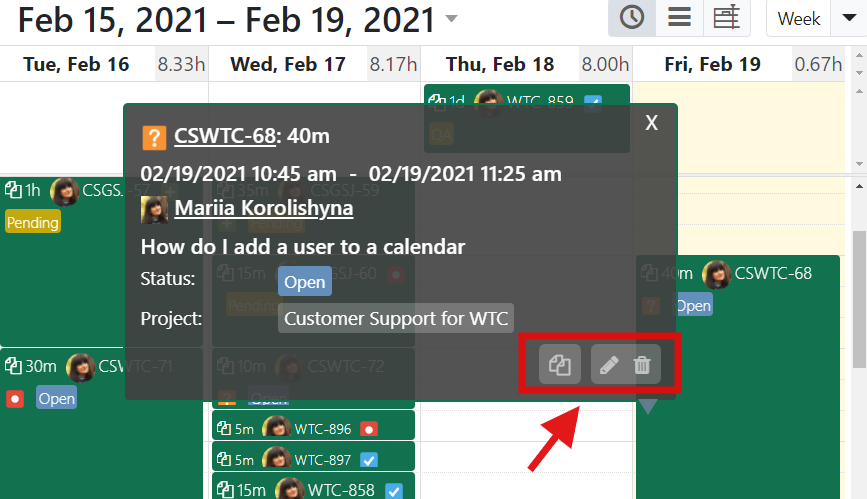
.png?version=1&modificationDate=1626695402309&cacheVersion=1&api=v2&width=677&height=489)
